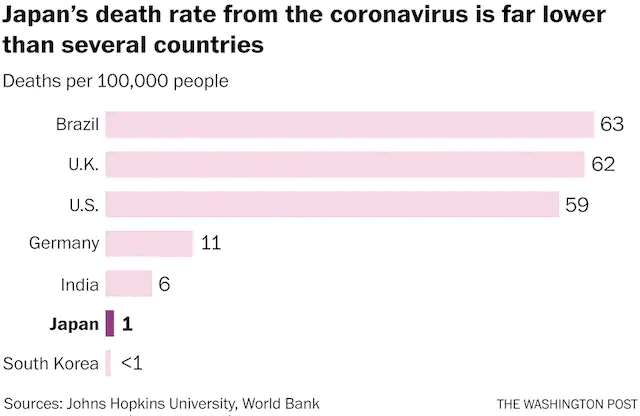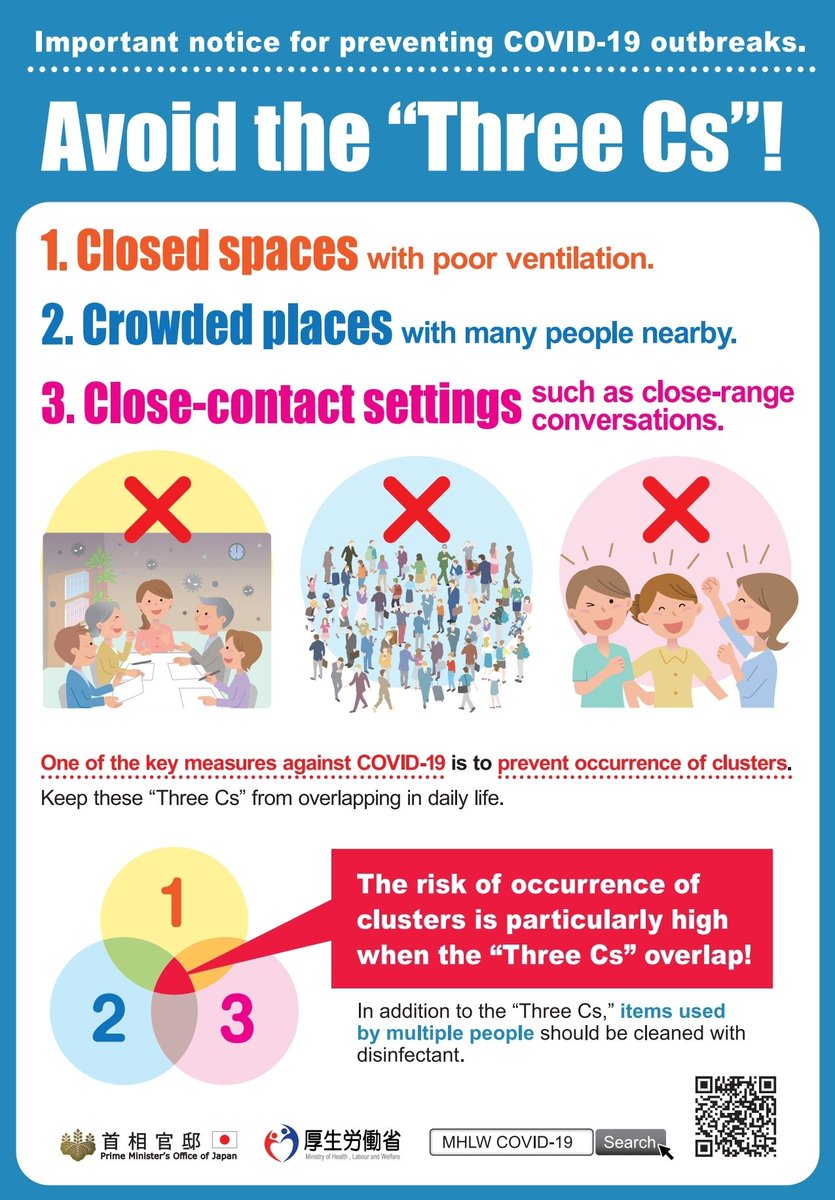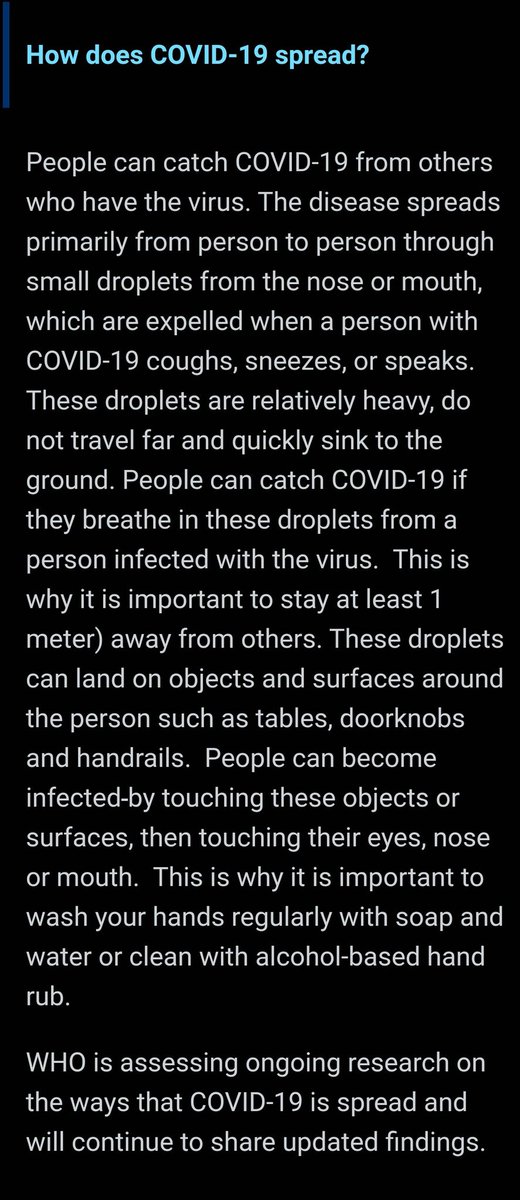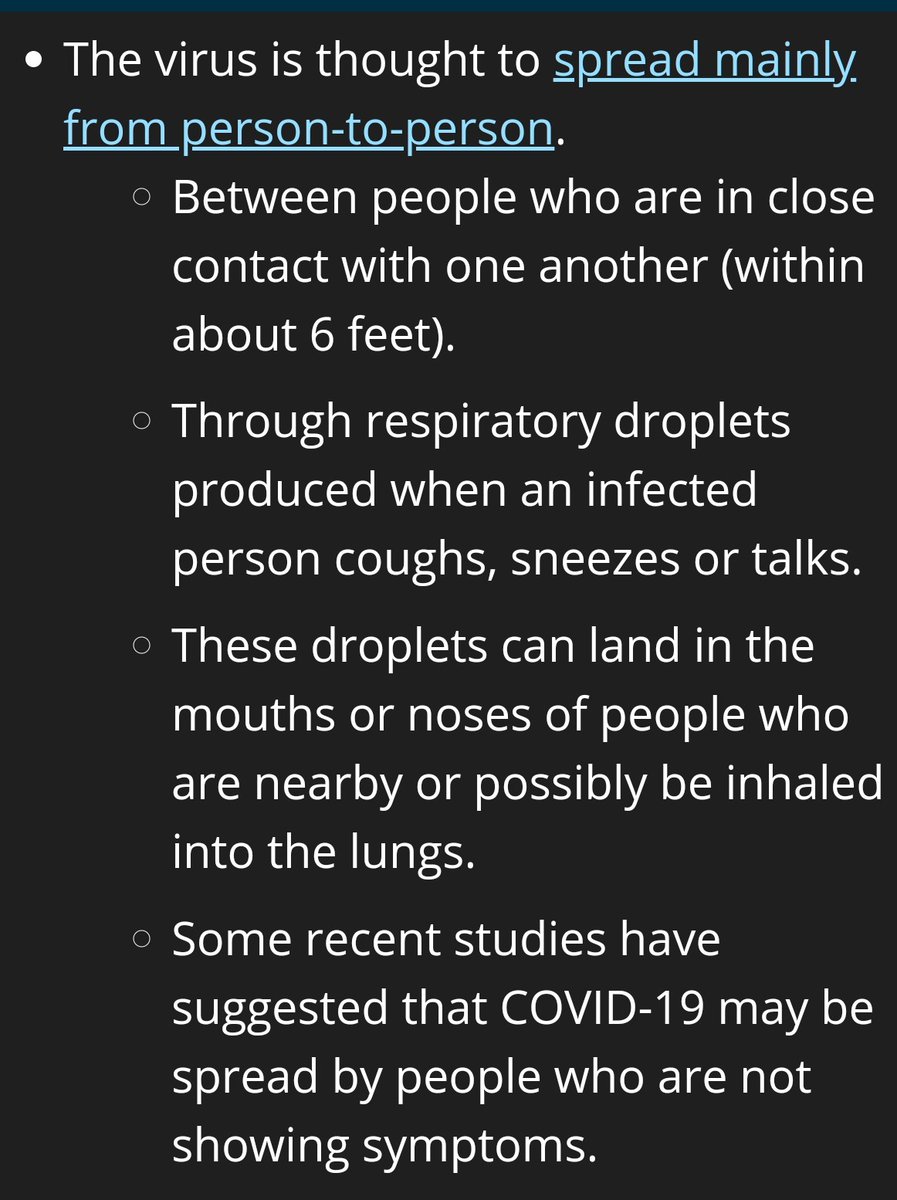1. Japan has a remarkably low death rate despite avoiding harsh lockdowns. That& #39;s because it a) recognized early that the virus doesn& #39;t just transmit at close distances, but also long-range & b) its public adheres to public health guidance. Western nations should emulate these  https://abs.twimg.com/emoji/v2/... draggable="false" alt="🧵" title="Thread" aria-label="Emoji: Thread">
https://abs.twimg.com/emoji/v2/... draggable="false" alt="🧵" title="Thread" aria-label="Emoji: Thread">
2. One feature of the virus is super-spreading where small minority can infect many others, often in crowded, poorly ventilated places. Few examples below https://abs.twimg.com/emoji/v2/... draggable="false" alt="👇" title="Rückhand Zeigefinger nach unten" aria-label="Emoji: Rückhand Zeigefinger nach unten">. While @CDCgov, @WHO, others ignored or were too slow to acknowledge this, Japan embraced it early. https://twitter.com/AliNouriPhD/status/1305899457540771847?s=09">https://twitter.com/AliNouriP...
https://abs.twimg.com/emoji/v2/... draggable="false" alt="👇" title="Rückhand Zeigefinger nach unten" aria-label="Emoji: Rückhand Zeigefinger nach unten">. While @CDCgov, @WHO, others ignored or were too slow to acknowledge this, Japan embraced it early. https://twitter.com/AliNouriPhD/status/1305899457540771847?s=09">https://twitter.com/AliNouriP...
3. It did that by advocating for the 3 Cs: avoid close contact, crowded places, and closed spaces WITH POOR VENTILATION. In other words, the virus doesn& #39;t just come out of your mouth and fall to the ground within 6 ft, but can float in the air you breathe, so mix in fresh air.
4. That& #39;s distinctly different from CDC& #39;s or WHO& #39;s main guidance which is largely about close contact (see below, CDC on right, WHO on left) The importance of long range aerosols and ventilation is an afterthought, buried in documents, not front and center like it should be.
5. Acting on the science early on and the advantage of a public that takes public health guidance seriously may have allowed Japan to co-exist with the virus as well as one can. https://www.washingtonpost.com/world/asia_pacific/as-infections-ebb-japan-hopes-it-has-cracked-the-covid-code-on-coexisting-with-the-virus/2020/09/17/4742e284-eea2-11ea-bd08-1b10132b458f_story.html">https://www.washingtonpost.com/world/asi...

 Read on Twitter
Read on Twitter " title="1. Japan has a remarkably low death rate despite avoiding harsh lockdowns. That& #39;s because it a) recognized early that the virus doesn& #39;t just transmit at close distances, but also long-range & b) its public adheres to public health guidance. Western nations should emulate these https://abs.twimg.com/emoji/v2/... draggable="false" alt="🧵" title="Thread" aria-label="Emoji: Thread">" class="img-responsive" style="max-width:100%;"/>
" title="1. Japan has a remarkably low death rate despite avoiding harsh lockdowns. That& #39;s because it a) recognized early that the virus doesn& #39;t just transmit at close distances, but also long-range & b) its public adheres to public health guidance. Western nations should emulate these https://abs.twimg.com/emoji/v2/... draggable="false" alt="🧵" title="Thread" aria-label="Emoji: Thread">" class="img-responsive" style="max-width:100%;"/>





